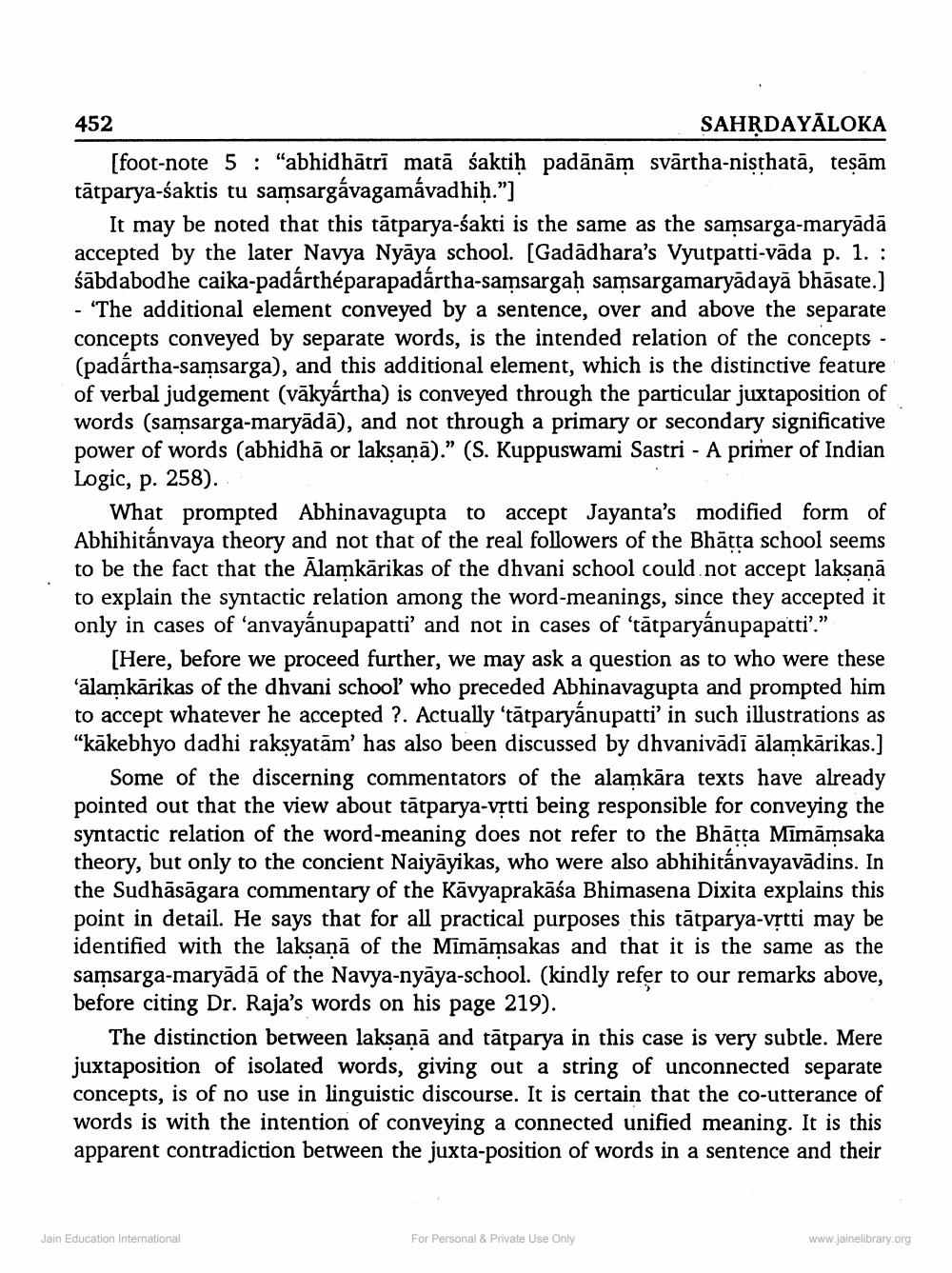________________
452
SAHRDAYĀLOKA [foot-note 5 : "abhidhātrī matā saktiḥ padānām svārtha-nisthatā, tesām tātparya-śaktis tu samsargávagamávadhiḥ.”]
It may be noted that this tātparya-śakti is the same as the samsarga-maryādā accepted by the later Navya Nyāya school. [Gadādhara's Vyutpatti-vāda p. 1. : śābdabodhe caika-padárthéparapadártha-samsargah samsargamaryadaya bhāsate.] - “The additional element conveyed by a sentence, over and above the separate concepts conveyed by separate words, is the intended relation of the concepts - (padártha-samsarga), and this additional element, which is the distinctive feature of verbal judgement (vākyártha) is conveyed through the particular juxtaposition of words (samsarga-maryādā), and not through a primary or secondary significative power of words (abhidhā or laksaņā).” (S. Kuppuswami Sastri - A primer of Indian Logic, p. 258).
What prompted Abhinavagupta to accept Jayanta's modified form of Abhihitánvaya theory and not that of the real followers of the Bhätta school seems to be the fact that the Alamkārikas of the dhvani school could not accept laksanā to explain the syntactic relation among the word-meanings, since they accepted it only in cases of 'anvayánupapatti' and not in cases of 'tātparyánupapatti'.”
[Here, before we proceed further, we may ask a question as to who were these 'ālamkārikas of the dhvani school who preceded Abhinavagupta and prompted him to accept whatever he accepted ?. Actually 'tātparyánupatti' in such illustrations as "kākebhyo dadhi raksyatām' has also been discussed by dhvanivādi alamkārikas.]
Some of the discerning commentators of the alamkāra texts have already pointed out that the view about tātparya-vștti being responsible for conveying the syntactic relation of the word-meaning does not refer to the Bhātta Mimāmsaka theory, but only to the concient Naiyāyikas, who were also abhihitánvayavādins. In the Sudhāsāgara commentary of the Kāvyaprakāśa Bhimasena Dixita explains this point in detail. He says that for all practical purposes this tātparya-vrtti may be identified with the laksanā of the Mimāmsakas and that it is the same as the samsarga-maryādā of the Navya-nyāya-school. (kindly refer to our remarks above, before citing Dr. Raja's words on his page 219).
The distinction between laksanā and tātparya in this case is very subtle. Mere juxtaposition of isolated words, giving out a string of unconnected separate concepts, is of no use in linguistic discourse. It is certain that the co-utterance of words is with the intention of conveying a connected unified meaning. It is this apparent contradiction between the juxta-position of words in a sentence and their
Jain Education International
For Personal & Private Use Only
www.jainelibrary.org




